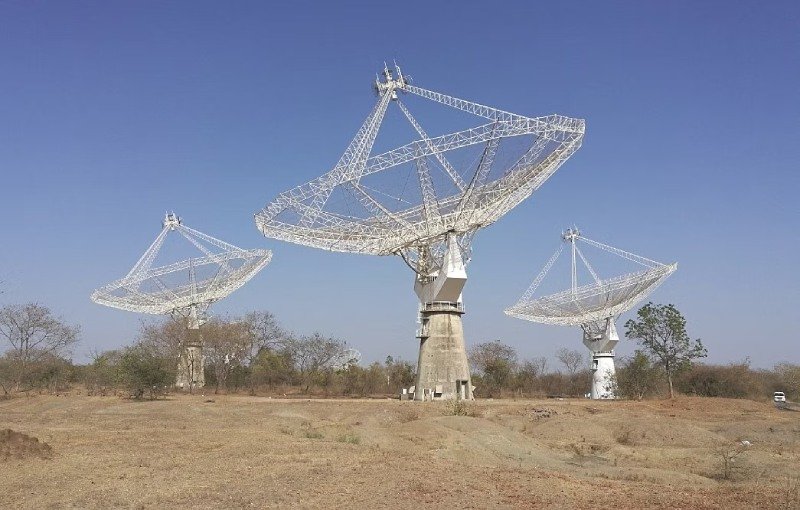The Giant Metrewave Radio Telescope (GMRT), located 90 kilometers north of Pune and consisting of 30 dish antennas, was instrumental in helping astronomers from Europe and the US uncover an extraordinary discovery—a colossal jet stretching 23 million light-years, making it the longest jet ever detected. This jet, which originates from material falling into a supermassive black hole in a distant galaxy, has surpassed all previous records.
The GMRT, along with two other telescopes, played a pivotal role in identifying the source of this unusual signal. Plasma jets, high-speed streams of electrons and protons, are typically ejected as material is drawn into the gravitational pull of supermassive black holes, which exist at the centers of most galaxies. However, not all black holes are constantly active, and jets form only under specific conditions influenced by the black hole’s magnetic fields and gravitational forces.
Yogesh Wadadekar, a scientist at the National Centre for Radio Astronomy in Pune, noted that until this discovery, the longest known jets spanned between five and ten million light-years. The newly discovered jet, named Porphyrion after a giant in Greek mythology, is nearly three times as long, covering 23 million light-years-equivalent to the size of 140 Milky Way galaxies placed side-by-side. According to Wadadekar, this finding challenges current models of jet formation from supermassive black holes.
The discovery of Porphyrion was part of a larger survey conducted by European and US astronomers using the Low-Frequency Array (Lofar) radio telescope in the Netherlands. Over five years, they detected nearly 11,000 radio signals from large structures. While Lofar was crucial in detecting these signals, pinpointing the exact source required a more powerful instrument, making GMRT ideal due to its high sensitivity and low radio frequency capabilities.
Once the source was identified by GMRT, astronomers used the Keck I optical telescope in Hawaii to calculate its distance. Martijn Oei, a scientist at the California Institute of Technology and the lead author of the paper published in Nature, believes this discovery might only be the beginning. He noted that their survey covered only 15% of the sky, suggesting the possibility of more such massive jets waiting to be discovered.
Martin Hardcastle, a professor of astrophysics at the University of Hertfordshire and co-author of the paper, added that while astronomers were aware of large jets before the survey began, they were astonished by the sheer number of these massive structures uncovered during the study.
Topics #Astronomers #black hole #galaxy #Indian Radio Telescope #Largest Jet #news #Pune #space #telescope #Universe











